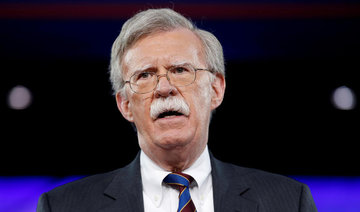LONDON: Saudi millennials are in the sights of youth-focused social media giants with Snapchat becoming the latest big name to be linked with a move to the Kingdom.
CNBC this month reported that Snapchat’s parent company Snap was in advanced discussions to open an office in Saudi Arabia, and was also developing a content deal with the Misk Foundation.
Such a partnership, CNBC reported, would provide training to local Saudis in producing content for domestic audiences. Snap declined to comment on the reports.
The move to increase its presence in Saudi Arabia would be a no-brainer for Snap; the Kingdom is one of its 10 largest markets.
“There are nearly 13.5 million users of Snapchat in Saudi Arabia, and between 21-25 percent of the population use the service every day,” said Damian Radcliffe, journalism professor at the University of Oregon, citing research he co-authored last year.
“Given this, it is not surprising that Snapchat opened an office last year in Dubai and is already looking to expand in the region,” he said.
“Snapchat is popular throughout the world. In Saudi Arabia, it’s among the top five apps on Google Play Store and Apple App Store,” said Ahmed Al-Rawi, assistant professor, department of communication studies at Montreal’s Concordia University.
If Snapchat does open in Saudi Arabia, it would be one of the first social media companies to establish a physical presence in the Kingdom, with most social media and technology firms setting up a regional base solely in Dubai.
The anticipated expansion of Snapchat comes as Saudi Arabia pushes through reforms designed to liberalize the country and encourage investment in non-oil industries.
At the end of last year, the Kingdom said it would lift its 35-year ban on cinemas and plans to open 300 cinemas by 2030.
Saudi Arabia is the largest social media market in the Middle East, making it an attractive proposition for advertising agencies and social networks.
It has 2.6 million active Twitter users, the highest number in the Arab world, and accounting for
29 percent of all active users in the region, according to the 7th Arab Social Media Report 2017.
The Kingdom also has the highest share of Instagram users, with
30 percent of all active accounts in the Arab region, the research found.
Snap, which opened its first Middle East office in Dubai last February, is already working closely with the region’s advertisers.
The content aspect of Snap’s rumored deal will be key. After building up impressive user bases, services such as Snapchat, Twitter and Instagram are battling to offer compelling content that will increase user engagement. This, in turn, can be used to attract advertisers.
Brands operating in the Gulf are particularly keen to use online advertising, said Rabia Yasmeen, analyst at Euromonitor International.
“In the Middle East, foreign brands as well as home-grown brands find it difficult to advertise products and services on conventional media platforms such as TV and billboards, mainly due to higher costs of advertising on these platforms as well as lower return on investment.
Though a relative new player, Snapchat is already winning over advertisers, mainly due to its popularity with young people who are typically highly active users of the app.
“Snapchat is popular especially for its engaging features, which many other social media apps lack in terms of peer to peer engagement,” according to Yasmeen.
While Facebook remains the global dominant force in social media across all age groups, some younger people are ditching the network in favor of apps such as Snapchat.
Teenagers want a social networking app that their parents don’t understand how to use, said Bill Fisher, UK-based senior analyst at the market research company eMarketer.
“It’s quite good fun and that is the big appeal of Snapchat,” he said.
In the US, two-thirds of those aged between 12 and 17 years old are now active monthly users of Snapchat. Only 46 percent of teenagers are active on Facebook. Around 83 percent of 18-24 year olds in the US are active monthly users of Snapchat.
The US ad-spend on Snapchat is expected to surpass spending on Twitter this year, Fisher said, citing eMarketer forecasts.
“What is important to brands and advertisers is that people are on the platform and using it every day. It is a very visual platform and agencies and marketers are getting very excited about visual and video advertising and Snapchat just offers a really good opportunity to show off this,” Fisher said.
In an effort to win over advertisers, Twitter has already moved aggressively into the original and exclusive content space in recent years. It acquired rights to livestream 10 Thursday night NFL games in 2016 (which it subsequently lost last year after being outbid by Amazon).
The micro-blogging service has also been active in the local content space in the Middle East, with Saudi Arabia one of its 10 largest markets as well.
Last year Twitter partnered with Sela Sports to live-stream 21 matches from the 2017 Arab Championship regional football tournament, its first live stream of a global football tournament.
Facebook meanwhile in October opened an expanded MENA headquarters in Dubai.
Google is also targeting expanded growth in Saudi Arabia with a focus on increasingly localized content.
Social platforms eye Saudi Arabia as Snap looks to expand foothold
Social platforms eye Saudi Arabia as Snap looks to expand foothold













